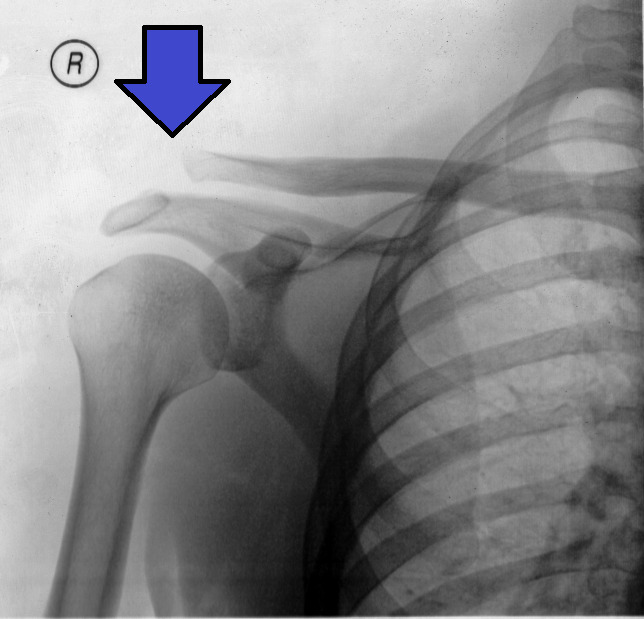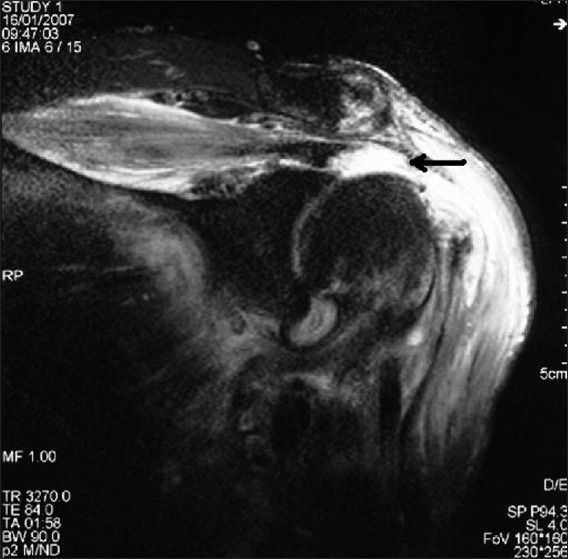Playlist
Show Playlist
Hide Playlist
Acute Shoulder Pain: Diagnosis
-
Slides AcuteShoulderInjury AcuteCare.pdf
-
Download Lecture Overview
00:01 So, let's talk about that physical exam that’s so important. 00:04 It starts with just a simple inspection. 00:06 So, patients should have their shirt off, in a gown, and therefore, taking a look – do their shoulders look symmetric when you're examining them? Is one raised up, one raised down? Do you see muscle loss on one side versus the other? Inspections are always a good place to start. 00:20 Active and passive range of motion. 00:23 Remember that the shoulder has more range of motion than any joint in the body. 00:26 And so, therefore, I’d give the patient plenty of room. 00:29 First have them move their arm in terms of abduction, flexion, extension, external – internal and external rotation. 00:37 All the range of motion actively. 00:39 Then help them to do it with passive range of motion. 00:43 And compare that to the other side. 00:44 Palpate the structures in the arm, the ones that I – I mean, in the shoulder. 00:47 The ones that I mentioned can be worsened. 00:50 And then do some provocative testing as well. 00:54 Also, certainly consider, particularly when the case sounds a little bit different than what you might normally expect from, say, a tendinitis or even acromioclavicular joint disease. 01:05 Think about doing a neurological and a vascular examination of the upper extremity as well. 01:11 And then think about referred pain. 01:13 Sometimes patients will refer to their shoulder. 01:16 So everything from here, over their lateral neck and trapezius, down to here, over their bicep. 01:22 So, really try to have the patient demonstrate to you where is the pain happening. 01:29 A few clues to diagnosis from the history. 01:32 Diabetes and hyperthyroidism are associated with a higher risk for adhesive capsulitis. 01:38 Pain that’s really anterior and superior is around the AC joint, so think about acromioclavicular joint disease. 01:46 Pain with overhead activity, pretty common and often associated with rotator cuff disorders. 01:52 I see that in a lot of overuse injuries. 01:56 So, a few tests. 01:58 And I’m going to just try to demonstrate these briefly just using my own arm. 02:01 Hawkins test. 02:03 It’s internal rotation with the shoulder flexed to 90° and just internally rotate. 02:07 Pain there indicates a rotator cuff problem. 02:11 Some kind of inflammation. 02:12 Whereas an empty can test is specific for the supraspinatus. 02:16 So, it's shoulder abducted and extended 90°, like you’re emptying a can, and then you as a provider push down, and weakness and pain indicate a supraspinatus problem. 02:28 Supraspinatus, most common rotator cuff tendon injured. 02:32 The lift-off test, this is around the back. 02:35 And I’m going to try to show you. 02:35 So, some patients can’t even get their arms to this position, so that has to be a starting point. 02:41 And then lifting off, indicates AC joint disease. 02:42 pushing against your hand with resistance could indicate a problem with the subscapularis tendon. 02:49 External rotation test, arms to the sides, and elbows are flexed to 90°. 02:53 External rotation can indicate – against resistance like this can indicate a problem with the infraspinatus. 03:01 Speed’s test, the arm is raised to 60° and active resistance is applied here. 03:08 Especially if you palpate in the groove where the long head of the biceps inserts, so it’s anterior type pain in the shoulder, can indicate that that's actually the cause of the shoulder pain. 03:20 And it is different because it is usually – it’s another form of anterior type shoulder pain. 03:26 And then finally, the cross-body adduction test, so this is simply an adduction of the arm across the chest and real pain, especially more anterior and superior, indicates AC joint disease. 03:38 So, there’s a few different provocative tests that are worth doing because they can really shed some light as to what's going on inside the joint and around it and give you a better idea.
About the Lecture
The lecture Acute Shoulder Pain: Diagnosis by Charles Vega, MD is from the course Acute Care.
Included Quiz Questions
Which of the following is NOT typically part of a routine shoulder examination for shoulder pain?
- Phalen's test
- Visual inspection of both shoulders to check for symmetry
- Assessment of active range of motion
- Palpation of the shoulder joint
- Assessment of passive range of motion
Which of the following is the most common shoulder disease in patients with diabetes?
- Adhesive capsulitis
- Acromioclavicular joint disease
- Rotator cuff tendonitis
- Supraspinatus tendon tear
- Biceps tendonitis
A 62-year-old woman presents with a month of persistent right shoulder pain, especially in the anterior and superior regions of the shoulder joint. On physical examination, her shoulders appear symmetrical. She has mild tenderness at the distal end of the right clavicle. The pain is reproduced when she actively reaches across to put her hand on the opposite shoulder. The Hawkins–Kennedy test and Speed's test are both negative. Which of the following is the most likely diagnosis?
- Acromioclavicular joint disease
- Rotator cuff disease
- Supraspinatus tear
- Biceps tendonitis
- Adhesive capsulitis
A positive finding after which of the following tests is most likely indicative of damage to the tendon of the supraspinatus muscle?
- Empty can test
- Cross body adduction test
- Spurling's test
- External rotation test
- Speed's test
Which of the following findings is most specific for a supraspinatus tear?
- Weakness when downward pressure is applied to the arm that is actively abducted to 90 degrees
- Inability to resist an eccentric movement into extension when the arm is forward flexed to 90 degrees
- Pain when the shoulder is passively hyperadducted at 90 degrees flexion
- Pain when the patient actively reaches across to put their hand on the opposite shoulder
- Weakness and pain when active downward resistance is applied to a shoulder flexed to 60 degrees
What does Speed's test evaluate?
- Biceps tendon pathology
- Supraspinatous tendon pathology
- Infraspinatous tendon pathology
- Adhesive capsulitis
- Acromioclavicular joint osteoarthritis
Customer reviews
5,0 of 5 stars
| 5 Stars |
|
1 |
| 4 Stars |
|
0 |
| 3 Stars |
|
0 |
| 2 Stars |
|
0 |
| 1 Star |
|
0 |
It was very comprehensive and easy. All the aspects of shoulder exam were covered





